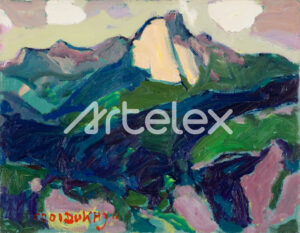Choi Deok-hyu (崔德休) was both an independence activist and a painter known for his landscape paintings. His work often depicted mountains, rural scenes, urban landscapes, harbors, and fishing boats, with a focus on figurative representations. Born on July 4, 1922, in Singok-ri, Geumma-myeon, Hongseong County, Chungcheongnam-do, Choi became interested in art during his time at Whimoon Middle School, influenced by the painter Jang Bal. He later pursued formal education in Western painting at the Tokyo Imperial Art School.
During the Japanese occupation, Choi was conscripted into the Japanese army but managed to escape and eventually joined the Korean Liberation Army in China, participating in anti-Japanese battles. After Korea’s liberation, he dedicated his life to art and education, holding numerous solo exhibitions throughout his career.
Choi’s landscape paintings, including works such as “Seoul Landscape Seen from Namsan” and “Deokhyeon-ri Landscape,” are well-known. These pieces showcase his enduring love for Seoul and its changing scenery, which he revisited over a span of more than a decade. His works reflect a keen observation of nature and cityscapes, often rendered in a figurative style, though he also experimented with abstract expressions between 1960 and 1963.
Choi Deok-hyu’s contributions to both art and education were significant, and he played a vital role in fostering art education in Korea. In recognition of his efforts, his works have been preserved in institutions such as Kyung Hee University and the Seoul Museum of Art, and a memorial hall was established in his honor in Yongin, Gyeonggi Province, in 2003.

